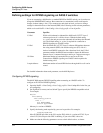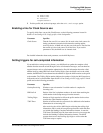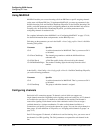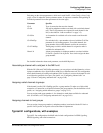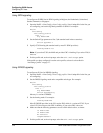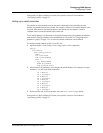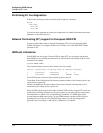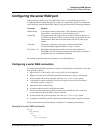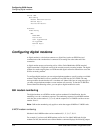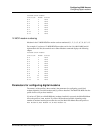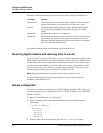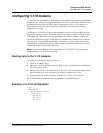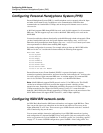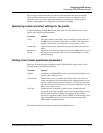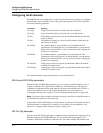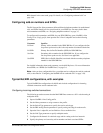
3-30 MAX 6000/3000 Network Configuration Guide
Configuring WAN Access
Configuring digital modems
Serial WAN
Mod Config
Module Name=wan-serial
Nailed Grp=3
Activation=Static
Ethernet
Frame Relay
NNI
Name=NNI
Active=Yes
Call Type=Nailed
FR Type=NNI
Nailed Grp=3
...
Configuring digital modems
A digital modem is a device that connects to a digital line (such as an ISDN line) and
communicates with a modem that is connected to an analog line at the other end of the
connection.
A digital modem accepts an incoming call as a Pulse Coded Modulation (PCM) encoded
digital stream that is a digitized version of the waveform sent by an analog modem. The digital
modem also sends outgoing data as a PCM-encoded digital stream for transmission across the
WAN to an analog modem.
To configure digital modems, you can assign telephone numbers to specify routing to available
modems. When the MAX receives a modem call on a PRI line, the call’s ISDN call setup
message notifies the unit that the call is a modem call. Inband calls have no setup message, so
you must assign telephone numbers to route modem calls correctly. To shut the T1/PRI lines
down without disconnecting callers, you can quiesce digital-modem slot cards.
56K modem numbering
The digital modems on a K56Flex modem card are numbered for identification, but the
numbering is not in a continuous sequence. The numbering sequence for an 8-MOD modem
card does not use the number 4, 5, 8, or 9, and the sequence for a 12-MOD card does not use
number 10 or 11.
Note: 56K modem numbering only applies to units that support 8-MOD or 12-MOD cards.
8-MOD modem numbering
Modems in the 8-MOD modem card are numbered 0, 1, 2, 3, 6, 7, 10, 11.
For example, if you have an 8-MOD modem card in slot 8 in a MAX 6000 and all eight
modems are idle, the terminal-server Show Modems command displays the following output:



